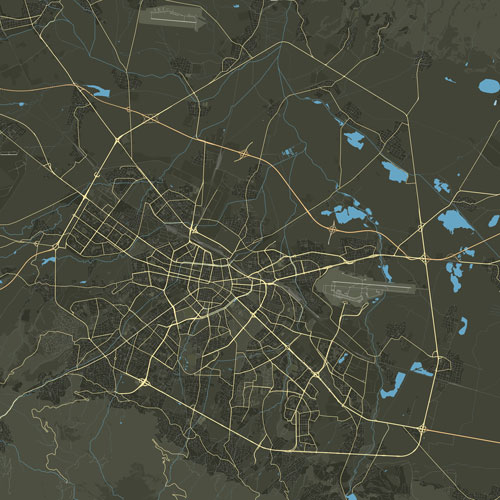There is no exact data on when the “Seven Thrones” monastery was built, also known as the “Holy Mother of God” Osenovla Monastery, located on the banks of the Gabrovnitsa River in the Rzana Planina, part of the Western Stara Planina.
It is assumed that this happened during the reign of Peter Delyan, whose brother, Prince George, founded it, accepted monasticism and became its first abbot. As is known, in 1737, Sultan Mahmud the First (called “The Godless One” because of his deeds) ordered the destruction of many temples, including the “Seven Thrones”. The holy monastery was restored in 1769, and in 1848 the cell school of Hieromonk Christopher opened its doors here. Sophronius Vrachanski, in whose diocese the monastery fell at the time, hid in the monastery.
Despite frequent pogroms, it did not cease to exist during the centuries of slavery. Many legends were also born. One of the most vivid is about the famous Valchan voivode from the nearby village of Osenovlag, who acquired a huge estate buried somewhere nearby. No one knows where, because both the voivode and his associates were killed by the Turks. Enthusiastic treasure hunters search for it in vain to this day. Leaving aside the legends about its founding by seven boyars /or brothers/, the monastery probably got its name from the unique church for our country and for Europe, built in 1815. It is composed of seven altars /thrones/, each of them, dedicated to a Bulgarian saint, is a separate chapel with its own iconostasis and wall paintings. The four main altars form a cross and are separated from the main hall by internal walls.
The icons and carvings from the XVII-XVIII centuries are the work of local masters such as Pope Nikola from Teteven, daskal Uros and Stoyu from Troyan. The two large icons from the 19th century, “Holy Mother of God the Guide” and “Christ the Omnipotent” are probably the work of the Vitanovci painters from Tryavna. It is believed that the church’s miraculous icon “Nativity of the Virgin” was brought all the way from the Holy Mountain by the first abbot of the monastery.
When you find yourself here, do not miss to see, apart from them, the most interesting carving work, the polyulea called “Horo”, composed of fifteen parts. The monastery also has its own library with old Orthodox books, one of which was a gift from the Russian empress Catherine. In 1877, local craftsmen built a four-story building, the upper two of which are the monastic cells.
Religious and domestic scenes were painted on its facade. The second building, above the entrance to the “Seven Thrones” has a small but picturesque courtyard, where among the old trees you can also see the sequoia, which is rarely found in Bulgaria. The wooden and metal shutters attract attention, reminding that in July 1899, under the influence of the famous monastery, Ivan Vazov wrote his famous ballad “The clapper is beating”. Again in the courtyard, your attention will be drawn to the grave of a great writer with an unenviable fate, who published his works under the pseudonym Zmey Goryanin. His real name is Svetozar Dimitrov, who had the misfortune two years before September 9, 1944 to perform the position of press censor. Although he did no harm to anyone in this position, in 1945 the so-called People’s Court sentenced him to a year in prison, but what is worse is that the books of this children’s writer were banned and confiscated. When he was free again, he was offered to repent publicly in order to be rehabilitated, but he categorically refused. That is why even today there are not many people who know his work.
Work time:
Opening hours:
Every day: 8:30 – 16:30 (all year round)
Entrance fees: none
Talks: free
Contacts:
Tel: +359 888295471

